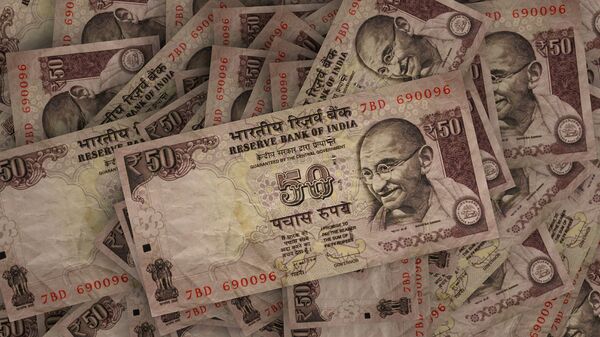Kristian Rouz — The Indian economy is facing mounting challenges, posing a political risk for Prime Minister Narendra Modi ahead of a national election, as imports rise, exports remain low, and higher tax costs put additional pressure on smaller private-sector companies.
Modi finds himself under pressure for not having done enough to increase the nation's role in international trade over the past five years.
According to a report from the Commerce Ministry, India's trade deficit rose to $14.73 bln last month, up from $13.08 in December. The nation's imports increased due to a rise in gold imports, while exports posted a modest expansion, contributing to the widening trade gap.
For their part, India's small exporters — which contribute roughly 35 percent to the nation's overall exports — are facing rising fiscal risks after the disorderly launch of the national sales tax back in 2017. India's exports in textiles, engineering products, and agricultural goods were impacted by the lack of bank financing of private-sector exporters, as well as protraction of refunds in the goods and services tax.
"Exports by small companies could have done much better if supported by flow of bank credit", Ajay Sahai of the Federation of Indian Export Organisations said.
The Commerce Ministry said that in January goods exports rose 3.74 percent to $26.36 bln, while imports increased 0.01 percent to $41.09 bln. Gold imports alone jumped a massive 38.16 percent to $2.31 bln.
A separate report from the Reserve Bank of India's Centre for Advanced Financial Research and Learning (CAFRAL) in Mumbai also found the government's statistic could be insufficiently representative of the state of affairs in the Indian economy. Experts believe the real macro fundamentals could be worse than they appear in governmental statistics.
"We have an unhappy situation where markets, agencies, and foreign investors are all making their own assumptions", CAFRAL's Amartya Lahiri said.
Economists say India's foreign trade could have been impacted by the ongoing tensions in international trade. The nation's trade deficit in the first 10 months of the 2018-2019 fiscal year increased to $156 bln compared to $136 bln over the same period of the previous year.
"Global trade growth is slowing down and global economies including China and South East Asian nations are also facing contraction in manufacturing, worsening the fragile global situation", Ganesh Kumar Gupta of the Indian Export Organisations said.
Indian exports could face additional pressure in the 2019 calendar year, and experts believe the nation's trade deficit could increase further.
India's exporters also said that the nation has not benefited from the disruptions in the US-Chinese trade, while countries like Bangladesh and Vietnam have increased their own exports to the US market amid the elevated friction. India has largely failed to take over China's share of exports to the largest international markets, and PM Modi is facing rising criticism for the inefficient trade policies.
This as India's exports to the US rose 10.5 percent between last April and December, compared to 11.8-percent growth over the same period of 2017. However, imports from the US increased a whopping 35 percent last year, hardly contributing to the profitability of Indian trade.
Officials in New Delhi said they are in the middle of talks with US trade representatives to increase bilateral cooperation in aerospace and defence, as well as biopharmaceuticals and energy sectors. This as India has faced criticism from US President Donald Trump, who said that the nation's tariffs are too high, while some local taxes prevent the expansion of US companies into the Indian market.
However, Indian experts say that deeper cooperation with the US might not necessarily benefit the Indian economy due to its slowing exports and rising imports from the US. However, stronger US ties could help bring foreign investment to India, albeit possibly at the cost of a deeper trade deficit.
The "country… needs foreign capital inflows to the tune of nearly $100 billion every year", CAFRAL's Lahiri said.
READ MORE: 'Our Gift is Your Vote': Indian Couple Urge Wedding Guests to Back PM Modi
For its part, the International Monetary Fund (IMF) said India's GDP could grow 7.5-7.7 percent in 2020-21, making it the fastest-growing economy in the world.
This outlook, however, happens to be at odds with the Indian government's nominal GDP growth projection of 11 percent — yet again raising a question of how accurate India's official data is.
READ MORE: Indian Apex Court Dismisses Staff Illegally Helping Corporate Czar


